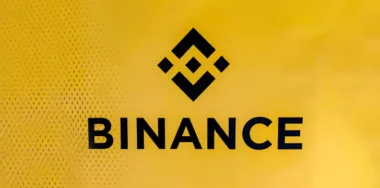Digital currency businesses will soon face much stricter oversight in the European Union via the formation of a new cross-border regulatory body to tackle digital currency-based money laundering.
In July 2021, the European Commission released an “ambitious package” of legislative proposals aimed at toughening the EU’s anti-money laundering (AML) and countering the financing of terrorism (CFT) enforcement. The proposals include establishing “a new EU authority to fight money laundering” that will for the first time be explicitly granted oversight of crypto companies’ activities in all EU member states.
The new Anti-Money Laundering Authority (AMLA) aims to improve detection of suspicious transactions and close regulatory loopholes that allow criminals to launder their ill-gotten gains, including through the use of digital assets. Key to these aims will be enhancing cooperation among financial intelligence units (FIUs) to ensure private sector operators “correctly and consistently” apply EU rules.
The European Council reached its own agreement on the need for a EU-wide AMLA this June. The Council’s vision would empower the AMLA to “directly supervise certain types of credit and financial institutions, including crypto asset service providers, if they are considered risky.” The powers granted to this AMLA are broad and severe, including the ability to require companies to turf executives deemed to be standing in the way of compliance.
The European Parliament is currently on its summer break but the plan is for its members to approve their own AML approach shortly after their return. After that, the three bodies will huddle up and work out a unified strategy, but there appears to be wide agreement on the need for a cross-border regulatory agency with the teeth necessary to rein in ‘crypto’ excesses.
‘Code is law’ on life support
Creation of a new AMLA is part of a broader plan to implement the sixth AML/CFT Directive (AMLD6), in part due to digital assets playing a much larger role in the economy than when the fifth Directive was introduced in 2018. Previous efforts resulted in patchwork reporting and enforcement across EU member states, a disparity that AMLD6 is intended to remedy.
This plan includes the Markets in Crypto Assets (MiCA) framework, which was proposed back in 2020 as a means of improving consumer protection, market integrity and financial stability. Tentative agreement was reached on MiCA at the end of June.
There’s also the Transfer of Funds Regulation (ToFR), which requires digital asset exchanges to have detailed knowledge of individual customers whether they’re sending or receiving digital assets, even if the transfers involve ‘unhosted’ (i.e. Trezor) or ‘self-hosted’ (i.e. MetaMask) digital wallets. (Certain EU markets have already begun applying similar requirements.)
Reaction to these initiatives from crypto bros has been predictably over the top, largely because any kind of oversight conflicts with their inane insistence that code is law. Cry all they want, but it definitely seems like their days of unrestricted fun fun fun are coming to a close once daddy takes the Vespa away.
The EU hopes the new AMLA is up and running by 2024 with a total staff count of around 250 by the end of its first year. That could be a tall order, given that José Manuel Campa, chair of the European Banking Authority (EBA), recently expressed concern over the challenges of recruiting staff with crypto knowhow, including paying salaries competitive with those offered by private sector firms.
That’s slightly less of a problem right now, as many exchanges have been forced to dramatically trim their payrolls. But retaining staff could prove difficult if/when the current ‘crypto winter’ thaws and companies pivot back to growth mode. Any staff with insider experience could also be highly prized by private firms looking for tips on how to game the new regulatory system, much in the way the perpetual ‘revolving door’ between the public and private sectors has prevented cracking down on the excesses of so many other industries.
Once a crook…
Among the exchanges most likely to be targeted by the EU’s new watchdog is Binance, which, while obtaining operating licenses in France and Italy this year, has nonetheless built its brand on non-compliance with local regulations. Honestly, when the AMLA’s criteria for identifying a ‘high risk’ company includes firms whose “serious, systematic or repeated breaches of applicable requirements” aren’t being reined in, Binance is the first name that pops into mind.
But don’t take our word for it. Consider Binance boss Changpeng ‘CZ’ Zhao’s recent attempt to complain about (other) scammers trying to piggyback off Binance’s status as the largest exchange by trading volume. CZ tweeted that “LinkedIn has 7000 profiles of ‘Binance Employees,’ of which only 50 or so are real.”
Getting past the crushing irony of CZ lamenting LinkedIn’s apparent disinterest in performing proper ‘know your customer’ (KYC) on people opening accounts on its platform, there’s also the problem of CZ recently claiming Binance has 6,000 employees and plans to hire another 2,000. And yet only 50 of these thousands see the value in advertising their connection to the sector’s shadiest operator? Which still doesn’t have a permanent headquarters? And which claims to own an asset when it suits Binance’s purposes then denies ownership the moment that asset is caught breaking the law? Odd, that…
Binance formerly hid behind its claims of having (a) obtained a license and (b) put down corporate roots in Malta in order to cater to customers based in other EU markets. That came to a halt in 2020 when Malta’s financial regulator publicly called Binance out for its lies.
Unlike other firms who also opted against seeing their Maltese applications through to fruition, Binance simply chose to create its own reality, a subterfuge that went on for years. If regulators in France and Italy prove equally inept at ensuring Binance stays on the straight and narrow path, the EU’s new AMLA will have its work cut out for it.
Watch: BSV Global Blockchain Convention, Law & Order: Regulatory Compliance for Blockchain & Digital Assets
New to blockchain? Check out CoinGeek’s Blockchain for Beginners section, the ultimate resource guide to learn more about blockchain technology.









